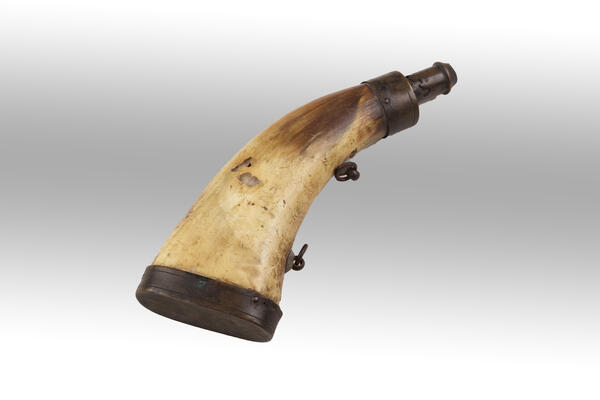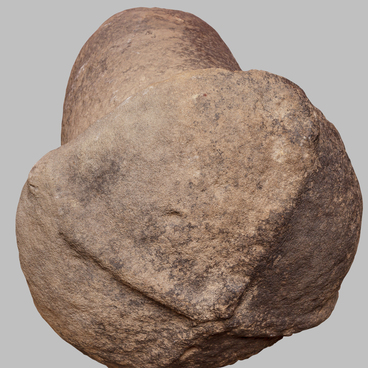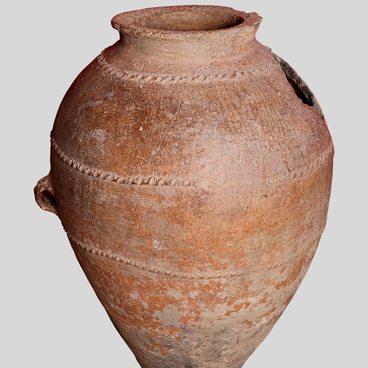A powder flask is an essential part of shooting equipment. It is a small container for gunpowder, which was worn by warriors and hunters. A powder flask was included in the shooting equipment along with other pieces — bullet bags and a supply of wads. A powder flask was used to load muzzle-loading weapons. This happened as follows: gunpowder was placed in the barrel (in the early versions of firearms it was a measured amount with a wad seal), after which a bullet rolled into the barrel, followed by another wad, which prevented the bullet from rolling back. Only from the 17th century a ready-made cartridge came into use. However, in both charging options, it was necessary to place the loose priming powder on the lock pan and set it on fire.
Since the 15th century, there have been various types of powder flasks. They came out of use and became unnecessary, when unitary cartridges were introduced in the late 19th century. It is noteworthy that today a powder flask image has been preserved in heraldry. For example, there is such an image on the coat of arms of the Federal Agency for State Reserves of the Russian Federation. It also became a catchphrase — “there is still gunpowder in the powder flasks” from the novel “Taras Bulba” by Nikolay Gogol.
Small powder flasks (“natruskas”) contained high-quality “priming” powder, which was put onto the pan of a rifle or pistol flint lock to ignite the main charge.
In general, any convenient bag, box or vessel could be a powder flask, but two types of containers were usually preferred — round and horn-shaped. This sample is made of cow horn. This design made it possible to keep the gunpowder dry, and the shape was convenient: it made it possible to measure the amount of gunpowder needed for priming thanks to the measure set in the neck. This, in turn, helped to load the weapon faster.
Such items of equipment were made by local artisans and were always in demand. Usually powder flasks had rings, which were used to attach them to the waist or weapon belt, so that they would always be at hand and would not get lost.
Since the 15th century, there have been various types of powder flasks. They came out of use and became unnecessary, when unitary cartridges were introduced in the late 19th century. It is noteworthy that today a powder flask image has been preserved in heraldry. For example, there is such an image on the coat of arms of the Federal Agency for State Reserves of the Russian Federation. It also became a catchphrase — “there is still gunpowder in the powder flasks” from the novel “Taras Bulba” by Nikolay Gogol.
Small powder flasks (“natruskas”) contained high-quality “priming” powder, which was put onto the pan of a rifle or pistol flint lock to ignite the main charge.
In general, any convenient bag, box or vessel could be a powder flask, but two types of containers were usually preferred — round and horn-shaped. This sample is made of cow horn. This design made it possible to keep the gunpowder dry, and the shape was convenient: it made it possible to measure the amount of gunpowder needed for priming thanks to the measure set in the neck. This, in turn, helped to load the weapon faster.
Such items of equipment were made by local artisans and were always in demand. Usually powder flasks had rings, which were used to attach them to the waist or weapon belt, so that they would always be at hand and would not get lost.





